EMPLOYER...
You may print this page for your management team or safety committee to examine and consider. Includes program summary description, track record outcomes, and training program content and preview of powerpoint slides.
-------------------------------------------------------------------------------------------------------------------------------------------
NO-LOST-TIME ...A PREVENTION PROGRAM THAT WORKS!!...
We have delivered MSD prevention programs to over 600 workplaces throughout the US since 1980. These companies average 72% reduction in lost work days for back-neck-arm MSD problems.
The NO-LOST-TIME program has three components:
1. Work Risk Analysis: more than an ergonomics analysis... examines each job to describe risks of ergonomics, worker behaviors and company policies that lead to injuries-claims-costs. A report suggesting corrections. Suggestions not limited to ergonomic re-design; rather, offers many no-cost low-cost alternatives to costly re-design. Gives you a written Action Plan to follow. To see a sample of this Ergo Risks Report, click this link.
2. Manager-supervisor Training on the Neck-Arm MSD School or Back School: on what causes your injuries-claims-costs and how to reduce them... ergonomics, medical issues, attitudes & policy issues, return to work strategies, stretching, job rotation, posture control, and many other tactics. Builds commitment among supervisors to implement your ergonomics plan with cooperation, motivation, skill. No prevention program can succeed without that !! And employee training will not work unless supervisors-managers are trained first.
3. Employee Training: Employee Neck-Arm MSD School or Back School for workers on reducing work fatigue-pain-injury... self-care and protection of the working aging body. Rather than focus on disease and symptoms, our tactic is fatigue-avoidance training! Employees must be trained to accept responsibility for the working aging body, motivating employees to avoid work fatigue and discomfort.
-----------------------------------------------------------------------------------------------------------------------------------------------------------------
Does it work? The most critical factor in selecting a prevention program is TRACK RECORD !
CLIENT OUTCOMES:
FOOD MFG O, Georgia: Before program=228 CTD lost days to CTD. After program=66 lost days, 72% decrease.
FOOD MFG B, Maine: Lost days to CTD was 338 days before program; 137 days after program. Lost time claims down 48%.
Lost days down 60%. Reportables reduced 67%. Annual review classes led to lost time reduced 75%.
FOOD MFG V, Pennsylvania: Year before program 944 lost days. Year after program 272 lost days, 71% decrease.
FOOD MFG U, Missouri: Program led to a 54% decrease in lost days to CTD and back injury.
FOOD PROCESSOR T, Mi; After 1991 program, 75% decrease in recordables for three years.
CANDY MFG W. Pennsylvania: Serious claims problems before program. 60% decrease in lost time a year later.
ELECTRIC EQUIP G, Maine: 757 lost days year before program; 9 days year after program, 98% reduction
ELECTRONICS G, NH: Year before program 67 lost days to CTD. After program 28 lost days, 60% decrease.
MICROCIRCUITS A, Maine: Before program 3 claims per month, affecting 30% of workers. After program 30 months of no claims. Productivity increased from 85% of standard to 102% of standard.
ELECTRONICS E, Maine: Year before program 590 CTD lost days. Year after 75 lost days, a 89% decrease.
ELECTRONICS K, NH: 616 lost days year before program; 32 lost days year after program; 95% decrease.
ELECTRONICS R, Michigan; IMPACC led to a 96% decrease in lost time.
ELECTRONICS H, Tennessee: 247 lost days for CTD before program; 20 year after 92% reduction. Also 65% decrease in lost time CTD incident rate. Productivity improved; valuable workplace cultural changes.
SHOE MFG N, Maine: Year before program 1499 MSD lost days. During program 392 lost days. Year after 16 lost days.
98% decrease.
SHOE MFG B, Maine: Had nine months of no lost time, 50% decrease for the year after program.
SHOE MFG W, Mi; The year after IMPACC program had 90% decrease in injury severity rate.
SHOE MFG S, Maine: Had a 50% decrease in CTD claims, with an increase in productivity after program.
SHOE MFG F, Maine: Before program 462 lost days. During program 94 lost days. After program 47 lost days.
Review program Two years after program = 9 lost days. 97% decrease.
SHOE MFG D, Maine: Facility M = 201 lost days before program; 24 lost days after program. 88% decrease.
...Facility D = 1677 lost days before program; 319 year after program. 81% decrease.
...Facility S = 298 lost days before program; 1 lost day year after program. 99% decrease.
...Company-wide = 82% decrease in lost days in year after program. Also: 9.3% increase in productivity.
FURNITURE MFG E, Vermont: After Back Program = 47% decrease in back lost days
FURNITURE MFG, Michigan: 300 employees went four years with no lost time MSD claims after program.
FURNITURE MFG T., Michigan: program led to our lowest medical costs in 25 years.
WOOD PRODUCTS H, Maine: Claims down from 7 to I; restricted days down from 195 to 14, a 92% decrease.
GOVT OFFICES VA, Maine: CTD incident rate 3.0% before program; 0.3% after program. 90% decrease.
CITY PUBLIC WORKS DEPT. L, Maine: musculoskeletal injury costs reduced 80% after program
PUBLIC UTILITY B, Maine: Before program back injuries 40% of claims. After program back injury 17% of claims.
HOSPITAL S, Illinois: Claims reduced 50%; Lost time reduced 75% since program.
HOSPITAL S, Virginia: back injury costs before program $36,407; year after $3,693... a 91% decrease
YACHT BUILDER, Michigan: Worker Comp bill was $500,000... year after program bill $50,000 90 percent decrease
BRUSH MFG F, New Hampshire: 556 CTD lost days prior to program; 56 days after program, 91% decrease.
AUDIOTAPE MFG O, Maine: Program led to 75% decrease in lost days to CTD. Attitudes much improved.
PUMP MFG W, Maine: Had serious CTD and back claims problem. After program no claims for eight months.
LEATHER TANNERY P, Maine: CTD costs in worse dept. were $ 330,000. After program $ 9,000 a 97 percent decrease
TEXTILE MFG G, Maine: Year before program 269 lost days to back injury. Year after 66 days, 75% reduction.
PAPER MFG S, Kansas: Year before program had 191 lost days. Year after had 45 lost days, a 73% decrease.
AMMUNITION MFG, Kansas: CTD illness rate 8.35 before program. After program rate 2.32, a 72% decrease.
CONSTRUCTION B, Maine: Year before program back lost days = 468. Year after = 73 days 85% decrease.
MEDICAL SUPPLY S, Maine: Worker Compensation costs for CTD reduced 91% after program.
GOVT OFFICES VA, Maine: CTD incident rate 3.0% before program; 0.3% after program..
CITY PUBLIC WORKS DEPT. L, Maine: musculoskeletal injury costs reduced 80% after program
FOUNDRY C, Mi; 1992 Worker Comp costs $382,000 after program, 1993 costs $41,00089% decrease.
HYDRAULICS MFG, Kansas; Lost days down for 142 to 71, 50% reduction; Restricted duty days down from 903 to 16,
PACKAGING PRINTING, Illinois: packaging printing plant of 275 employees saw a 75% reduction in claims.
How do we get such ambitious numbers? Several critical reasons: We go beyond ergonomics to examine worker risk behaviors. We teach workers they have responsibility to properly use and take care of the working body. We do not train workers without first training their supervisors. We teach employers how to reduce the cost of claims with specific claims response tactics. We use sit-stand tactics, task rotation tactics, and some very unique stretching tactics. We address MSDs not as repetitive motion injuries but as sustained posture disorders. We consider tendinitis and carpal tunnel to be commonly aggravated by neck issues rather than exclusively wrist issues. We address back problems not as lifting injuries but as the result of bending and many other risks beyond lifting. We show employers how to succeed with light duty strategies to achieve NO LOST TIME. See our essays below for details on all these.
---------------------------------------------------------------------------------------------------------------------------------------------------------------
WHAT DOES ‘NO-LOST-TIME’ COST?
A complete program costs about $30-40 per employee. But your costs are fully recovered if NO-LOST-TIME prevents only 2 or 3 MSD claims for a typical workplace; thereafter, the investment turns a profit. We average 70% reduction in MSD lost days.
DO BACK SCHOOLS WORK??... Some studies say no... other studies say yes. So, what is the answer? The reason we see conflicting study findings is one study uses one type of Back School approach, while another uses a different approach. We have provided 3000 Back School classes for about 300 workplaces. We have learned what works and what does not. Back Schools work very well IF certain rules are followed... 1. It is taught by a valid qualified expert in the eyes of the workers... 2. Training goes beyond lifting to address other often more important factors... 3. Up-to-date techniques are taught (some schools teach ineffective methods)... 3. Training is customized to match the specific demands of the workers being trained... 4. There is actual practice of techniques as a part of training... 5. Supervisors are trained first to address attitudes and workplace politics (this perhaps most important). When these rules are followed, results are good. Back School training typically costs about $30-40 per employee and typically reduces lost days and costs about 70%, for about a 10 to 1 return on investment in one year. Yes, Back Schools do work.
WHAT ABOUT NECK-ARM MSD SCHOOLS?? ..We have provided Neck-Arm Schools to reduce carpal tunnel and tendinitis for about 300 companies and have seen EXCELLENT results. This not simply an "ergonomics" training process. Ergonomics is not that effective when applied alone. This School goes beyond ergonomics to also address work behaviors, posture habits, flexibility, self-care, job rotation, seating tactics, and even stretching exercises. We see an average 75% reduction in lost work days and injury costs. And with improved productivity.
WHAT DETERMINES THE COST OF A CLAIM?? Critical factors determining the cost of a claim is... workplace policies, politics, attitudes. We describe unrealized cost traps and how to fix them. Employee relations, supervisor attitudes, company responses to claims, access to health care providers, dishonest health care providers, incompetent health care providers, managing restricted duty, timely reporting of pain problems, early intervention on pain complaints. There are MANY sources of unnecessary costs that can be corrected. Company A averages $5000 per MSD claim, while Company B averages $500 per claim. We see this every day. There are so many examples of $$ waste.
IS NO-LOST-TIME JUST ANOTHER "ERGONOMICS" PROGRAM??... No, NO-LOST-TIME is not another ergonomics program. The problem is much more than ergonomics. Effective prevention must go beyond ergonomics. You may not need to invest in expensive re-tooling of the workplace. Job re-design has had only limited success. Ergonomics seeks to reduce external demands on the body due to work design. But most injuries are not the result of faulty job design. Rather, they are caused more by faulty worker behaviors and poor fitness-for work. Ergonomic design has little effect on worker behaviors, posture habits, improper lifting, poor flexibility, fitness for work. Ergonomics is one important contributor to injuries, but it is not the entire definition of the problem! It is the responsibility of management to provide a safe workplace (ergonomics). BUT it is the responsibility of workers to properly use and care for the working body!!
And jobs with poor ergonomics may have no re-design alternatives. So what to do?.. job rotation reduces workers' time exposure to critical work stresses by providing variety of posture and movements. Rotate jobs every 1-2-4 hours, depending on severity of risks. It costs nothing. Production often increases due to reduced fatigue. A version of this is sit-stand option: switch frequently between sitting and standing at the job. Another alternative is stretching programs.
IS THE PHYSICAL THERAPIST QUALIFIED AS AN ERGONOMICS CONSULTANT ?? .... Absolutely yes. No one in our society is more highly trained on musculo-skeletal structure, work, function, injury, disease, treatment, and prevention than the physical therapist. No one.
---------------------------------------------------------------------------------------------------------------------------------------------------------------
THE STRATEGIES FOR MSD ELIMINATION...
Ergonomics-Engineering ..Re-design work to reduce the required stresses of work. This works if design is faulty and if alternative design is available and it is affordable. Seeks to dilute stresses to a less toxic level. (Lifting example: reduce weight or frequency or lowest height or highest height or horizontal distance or arc twisted or cumbersomeness of load, all to dilute severity of lifting requirements)
Exposure Reduction... Reduce time exposure to work stress that cannot otherwise be re-designed: job rotation, job enlargement to increase task variety, sit-stand option to switch between standing and sitting, switching between alternative methods or movement patterns doing the job. (Lifting example: lifting work limited to 1-2 hours, then switch to non-lifting tasks for 1-2 hrs)
Micro-Stretching.. Specific stretches that restore perfusion to overworked tissues; politically difficult but very effective if done right and enforced by mgt. Great protection on jobs that are stressful but no redesign available. See our essay on this. (Lifting example: Hourly standing back-bends and hamstring stretches)
Training & Education.. None of these work unless all parties are educated, not on what to do, but on why to do it. That is our Back School and Upper Extremity MSD School. (Lifting example: teach workers proper lifting techniques to correct work behaviors)
Workplace Stretching Programs..Yes, they do work!!!.... if you follow certain rules. Over 300 workplaces have implemented our stretching program...with consistently great success. But only if certain criteria are met. Studies showing poor results with stretching programs violated these criteria. Stretches must address the neck to reduce wrist-hand problems (tight neck muscles squeezing blood supply to wrist-arm tendons). Stretches must be designed by a professional therapist and be customized to the workplace. Workers must be educated as to how and why, and checked on their accuracy of doing them. Management must have the courage to ENFORCE exercises (supervisors must be trained in this and REQUIRED to cooperate). Our program requires only two minutes of total stretch time, done every hour or two. And productivity does NOT go down... it INCREASES according to our client workplaces that track piecework productivity, due to reduced fatigue. Stretching is especially valuable for stressful jobs but have no ergo re-design alternatives
THIS IS A FINANCIALLY & POLITICALLY CHALLENGING ISSUE...
.... EXPERIENCE & EXPERTISE ARE CRITICAL!!
Dr. Lauren Hebert, DPT, OCS, is an orthopedic and industrial physical therapist with 34 years of professional experience. Lauren authored the NO-LOST-TIME program. Lauren has trained and assited hundreds of therapists in the business of work injury consulting.
The most important factor in selecting a prevention program is TRACK RECORD. Lauren has delivered MSD prevention programs to over 500 workplaces, averaging 70% reduction in MSD lost work days in the year following implementation, many seeing increased productivity and improved employee relations. That depth of experience has also taught us how to succeed without disruption of delicate workplace politics. We need only to prevent one or two or three injury claims to pay for your NO-LOST-TIME program... (and we usually do much better than that).
-------------------------------------------------------------------------------------------------------------------------------------------------------
KEY ISSUES AND TACTICS...
1. ERGONOMICS? Maybe, maybe not. Ergonomics is essential, but not very effective unless worker behaviors are included. An ergonomically correct workstation does not force the individual to sit up straight or to have adequate flexibility or to bring a healthy and fit body to work. The individual needs good self-care skills and motivation, much like a professional athlete. THAT is what we teach the employees, in a highly motivating manner. They will be excited about using what we teach them. Plus, ergonomics measures are not always an available option. There are alternatives for those situations (sit-stand options, work technique options, task variety, micro-stretches that reverse fatigue and damage).
2. POSTURE is more critical than repetitive motion. How you carry your head on your neck determines the blood supply and nerve sensitivity to the working arm. Head-neck posture is a critical factor that must be addressed to prevent arm-hand overuse problems. Repetitive motion is better tolerated when the neck is properly postured and neck muscles are adequately relaxed and stretched. How we sit or stand is a critical target for MSD prevention measures.
3. BUT perfect posture is bad for you if you sustain it for long periods. Variety of postures and movement patterns are a key prevention tactic. Posture-motion-task variety is a critical tactic.
4. What is “proper” lifting? Bend your knees, do a pelvic tilt, keep your back straight and lift with your legs? NO! That is not correct. That is an traditional assumption based on old theories that have since been corrected with careful research. There are far more effective methods.
5. WORKPLACE POLITICS, POLICIES, ATTITUDES must be addressed. These are often the key to dramatic effects on Worker Comp costs and hassles. We address these directly during manager-supervisor training. That is why we have a manager-supervisor class, separate from the employee classes.
How the company responds to an injury claim is critical to reducing costs and maximizing return-to-work. We describe several critical steps to this: how you respond to a claim, contact with health care providers, how you structure restricted duty (a critical point!).
6. Yes, we advocate a very specific method of workplace stretching... MICRO-STRETCHING. Yes, this is controversial because of inconsistent research findings. That is because of very poor and biased research attempts. The micro-stretching method we use requires only 90 seconds of stretching, but it is done every two hours. Our research (pending publication) at hundreds of workplaces shows excellent outcomes for reduced MSD claims, as well as improved productivity. These are especially valuable where ergonomics measures have not been effective or ergonomics alternatives are just not available or where there is an aging workforce. This works IF stretches are properly selected by a professional physical therapist, employees are effectively taught these by an expert, with checkout for proper execution, and if management has the leadership to make these happen.
Why micro-stretches? Work postures and movements create pressure within working tissues (muscle contraction, tendon tension, joint compression). These pressures exceed blood pressure, reducing blood supply to working tissues. This allows those tissues to build up acid waste products from burning up nutrients. These acids are trapped and lead to pain and inflammation. This is a chemical attack on the tissues caused by reduced blood supply. THIS is the basis for tendinitis and other MSD problems. And this is so very reversible with brief micro-stretches, reducing tension and loading to restore blood supply. IT WORKS.
--------------------------------------------------------------------------------------------------------------
TRAINING TOPICS for the NO-LOST-TIME Back School or MSD School:
UPPER EXTREMITY SCHOOL... (management version)
What is the musculoskeletal (MSD) problem
Injury problem versus the Worker Comp costs problem
Ergonomics work design versus work technique versus worker health & aging
Workplace politics-policies-attitudes-employee relations risks
Faking or not? Work-related or not?
Company A pays $5,000 per claim; company B pays $500 per claim... WHY?
Musculoskeletal blood supply is the key
MSD comes from reduced blood supply... a nutrient pathway disorder
MSD prevention via restore blood supply & perfusion
Repetitive motion versus sustained posture (blocks perfusion)
Neck posture & thoracic outlet as major MSD source
Shoulder patho-mechanics
Tennis elbow pathomechanics
Wrist and carpal tunnel pathomechanics
Thumb & deQuervain's risks
Grip-Pinch
Vibration
Tool Ergonomics
Seating ergonomics
Computer ergonomics
Ergonomics strategies & tactics
Upper body micro-stretching tactics (an emphasis)
BACK SCHOOL...
Similar workplace politics-policies issues mentioned above (management version only)
Low back disorders
Posture versus mobility demands at lumbar
Facet joint anatomy-function-pathomechanics
Disc structure & function
Disc pathomechanics-bulge-rupture-degeneration
Ligament patho-mechanics
Muscle function and control
Muscle protection of discs-ligaments-joints
Forward bending risks
Hamstring risks
Sitting risks & corrections
Standing risks & corrections
Lifting ergonomics risks
Low back ergonomics tactics
Lifting habits
Lifting techniques & body mechanics tactics
Micro-stretching for the low back
Proper treatment and return to work
How to manage Restricted Duty
Health provider relations
Other prevention-treatment-recovery strategies
PLUS, a separate dedicated OFFICE-COMPUTER SCHOOL version of the MSD SCHOOL
Supervisor classes include workplace politics-policies-attitudes that magnify claims and costs... proper injury response... return-to-work strategies... Restricted Duty methods... motivating workers to protect themselves. These are workplace politics issues that we do NOT discuss with the employees.
Employee classes emphasize how to take care of yourself... how to survive work comfortably... how to minimize and reverse musculo-skeletal aging... how to protect yourself from MSD problems... how to work smarter to minimize work pain problems. We avoid issues that will upset delicate workplace politics.
SLIDES LIST for the supervisors' version of our Upper Extremity School and Back School...
The problem.. MSD claims-costs-productivity
MSD Tendinitis, carpal tunnel, back pain, overuse disorders
Worker health, worker fitness-for-work, the AGING worker!
MSD costs $1 million per 500 employees annually, 55% of Comp claims, 65% of costs
Company A average $5,000 per claim while company B averages $500 per claim ..WHY?
MSD risks work demands, work design, work technique, posture habits worker fitness, aging
MSD costs number of claims, timely reporting, management response, health care, attitudes
Workplace politics ..conflict increases costs
Faking.. only 7-10% are faking
What we mistake for faking is an attitude the worker has when the claim is not believed !
Work related? 20% are totally work-related.. 20% totally not work related ..60% are a mix
Ergonomics Injury.. poor terminology.. most MSD is not caused by poor job design
Ergonomics (work design & demands) VS The Worker (body mechanics and fitness for work)
The workplace needs to master the MSD issues.. what it is and how to fix it
WORK ..Movement ..Posture ..Loading
ANATOMY muscles tendons ligaments joints nerves blood supply
BLOOD SUPPLY IS THE KEY ..stressful work restricted blood supply
Reduced blood supply ..anaerobic work ..excessive acid waste products trapped in tissues
This causes inflammation tendinitis
MSD is a blood supply problem ...prevent MSD by improving tissue perfusion
Repetitive Motion ..Sustained Posture ..Work Health (and aging effects)
It is easier to improve posture than to reduce repetitive motion (without damage to production)
The AGING Worker
Wear damage scar tissue accumulation ..reversing musculoskeletal aging
Specific MSD risk factors
Forward Head Posture
Arm support
Shoulder; Cuff loads
Tennis Elbow Loads
Wrist and carpal Tunnel Stresses
Thumb MSD risks
Wrist flexion-deviation-supination-deQuervain's risks
Demographic Risks ..women, younger & older workers, new employees
Work demands risks ..production, turnover, piecework pay, workplaces stress
Work Design & Ergonomics: ..Posture ..Movement ..Loading ..Environment
Ergonomics problem-solving.. what's wrong with this job and how do we fix it
Computer workstation ergonomics
When Ergonomics is not a option... work variety, sit-stand, micro-stretching
MICRO-STRETCHING it works ! Rules for success
Our Micro-stretching Program
MSD COSTS STRATEGIES
Early reporting
Management's claims response
Health provider access ..quality care .. provider relations with workplace
Return-to-work strategies ..restricted duty procedures
LOW BACK SCHOOL
The human spine very mobile and very stable (at the same time)
ANATOMY of the Spine
Facet Joint;s how they work; problems
Discs; how they work; problems
Disc; bulging, herniated disc ,disc degeneration
Ligaments ..how they work problems
Muscles ..how they work problems
Loss of muscle protection and stability
Lifting is NOT the cause of most back injury
Workplace back injury risk factors
Forward bending
Tight hamstrings
Sitting posture risks
Standing posture risks
Lifting issues
Lifting ergonomics
Lifting techniques
Perfect posture is BAD for you when you sustain it for long periods
Posture variety is the key
MICRO-STRETCHES for low back protection
Self-Care of the low back
Proper treatment and return-to-work strategies
The company's NO-LOST-TIME Plan
Health care provider relations
How to manage Restricted Duty
Negotiating good health care creating your resources
Pre-Placement screening
EMPLOYEE VERSION ... This version eliminates slides discussing sensitive workplace politics . This version focuses on how the employee may take care of their working, aging body... how to get through a day’s work with minimal discomfort and maximum performance.... how one develops neck problems, rotator cuff, tennis elbow, tendinitis, carpal tunnel, and the six categories of low back problems.
How the musculo-skeletal system is put together and how it breaks down and what to do to take control of that... Self-care for pain problems... personal ergonomics skills and tactics... micro-stretching... posture stress control.
--------------------------------------------------------------------------------------------------------------------------------------------------
What do the slides actually look like? ...a few examples
UPPER EXTREMITY SCHOOLS SAMPLE SLIDES...

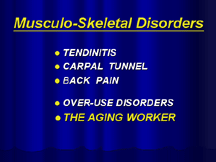
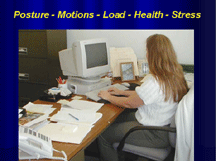
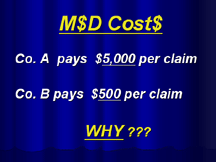
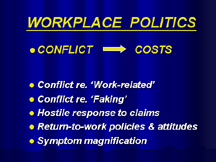
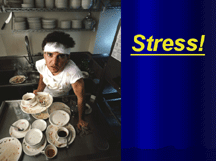
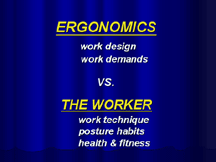
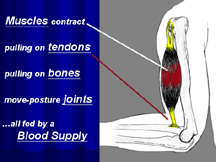
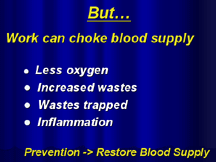
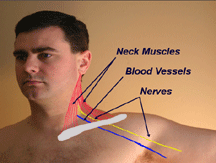
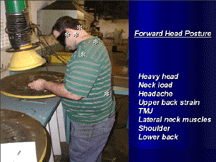
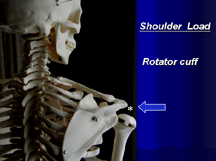
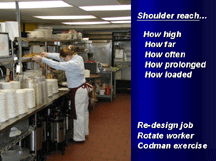
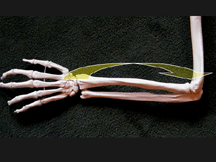



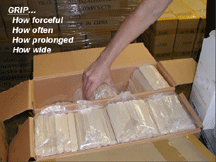
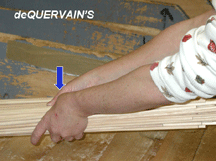
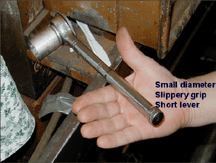
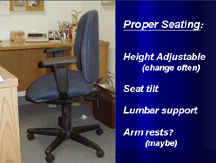
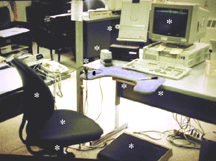
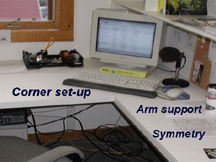
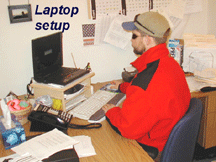
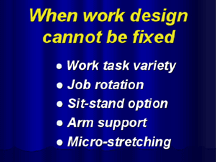
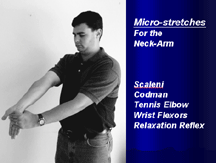
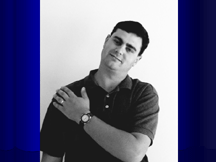
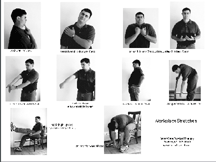
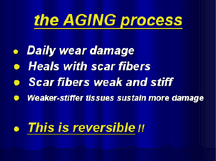
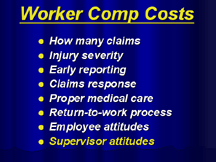
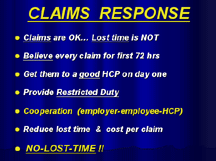
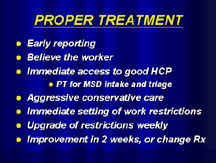
BACK SCHOOL SAMPLE SLIDES...
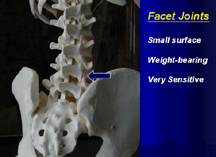
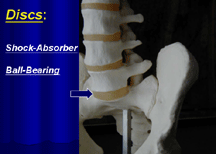

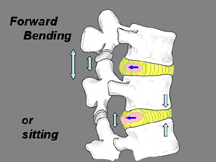
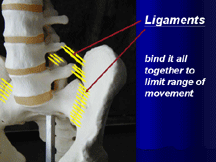
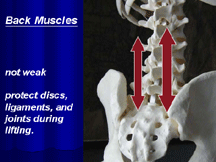

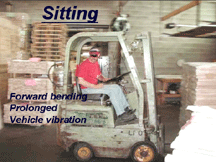
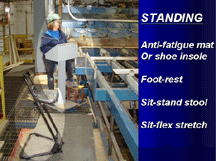
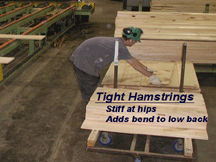
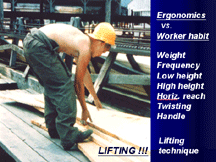
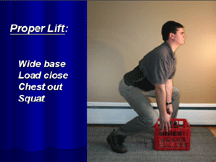
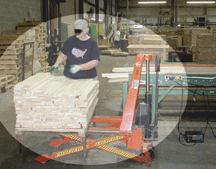
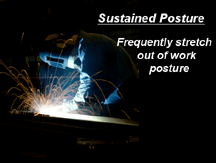
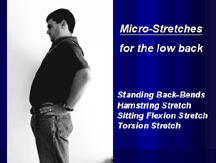
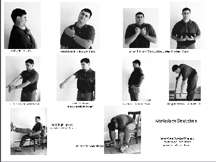
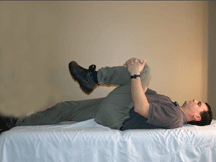
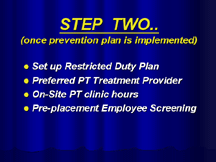
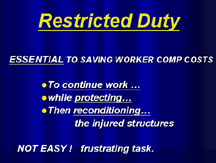
These are SOME of the topics covered.
